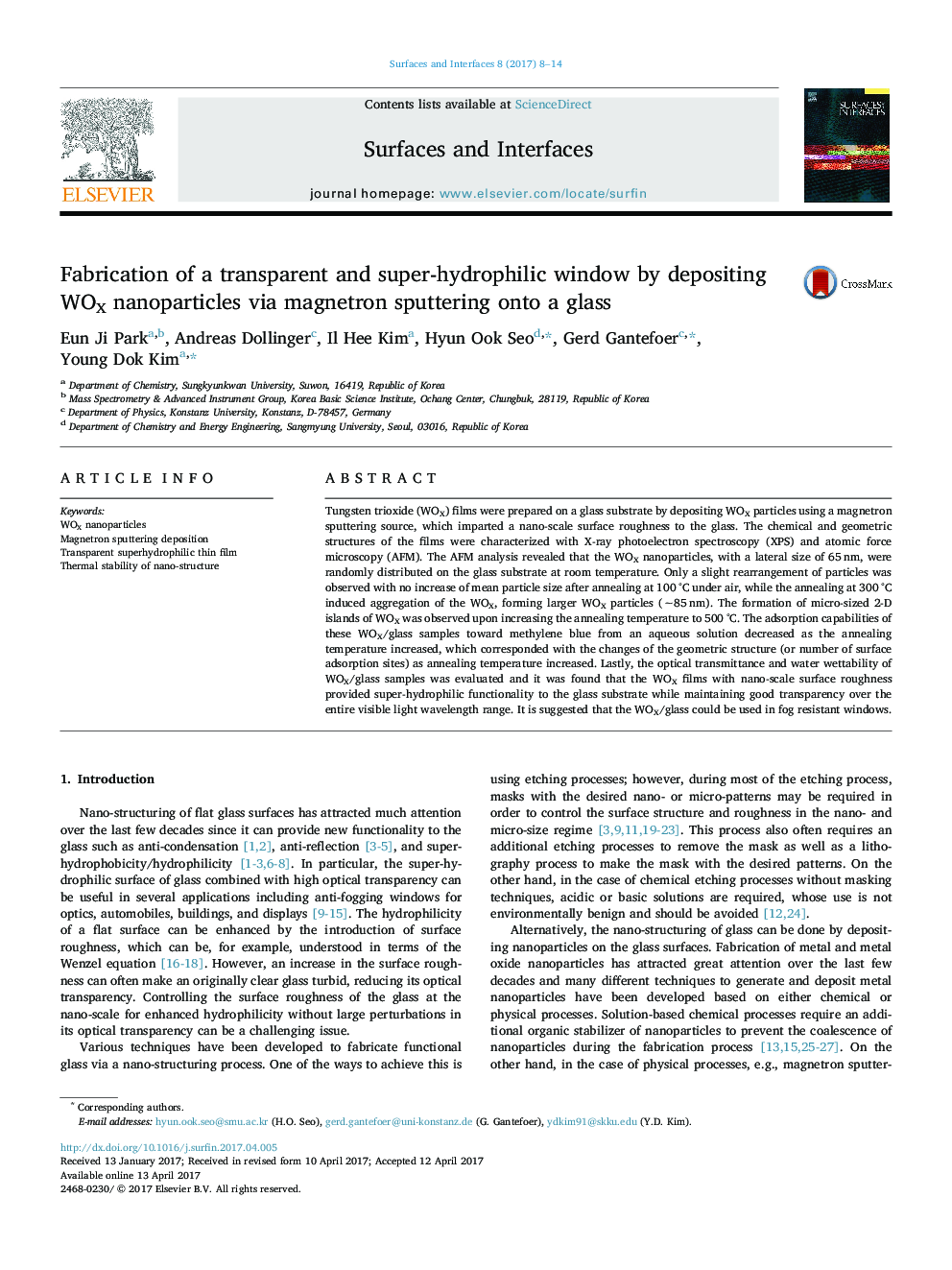| Article ID | Journal | Published Year | Pages | File Type |
|---|---|---|---|---|
| 4985624 | Surfaces and Interfaces | 2017 | 7 Pages |
Abstract
Tungsten trioxide (WOX) films were prepared on a glass substrate by depositing WOX particles using a magnetron sputtering source, which imparted a nano-scale surface roughness to the glass. The chemical and geometric structures of the films were characterized with X-ray photoelectron spectroscopy (XPS) and atomic force microscopy (AFM). The AFM analysis revealed that the WOX nanoparticles, with a lateral size of 65 nm, were randomly distributed on the glass substrate at room temperature. Only a slight rearrangement of particles was observed with no increase of mean particle size after annealing at 100 °C under air, while the annealing at 300 °C induced aggregation of the WOX, forming larger WOX particles (â¼85 nm). The formation of micro-sized 2-D islands of WOX was observed upon increasing the annealing temperature to 500 °C. The adsorption capabilities of these WOX/glass samples toward methylene blue from an aqueous solution decreased as the annealing temperature increased, which corresponded with the changes of the geometric structure (or number of surface adsorption sites) as annealing temperature increased. Lastly, the optical transmittance and water wettability of WOX/glass samples was evaluated and it was found that the WOX films with nano-scale surface roughness provided super-hydrophilic functionality to the glass substrate while maintaining good transparency over the entire visible light wavelength range. It is suggested that the WOX/glass could be used in fog resistant windows.
Keywords
Related Topics
Physical Sciences and Engineering
Chemical Engineering
Colloid and Surface Chemistry
Authors
Eun Ji Park, Andreas Dollinger, Il Hee Kim, Hyun Ook Seo, Gerd Gantefoer, Young Dok Kim,
